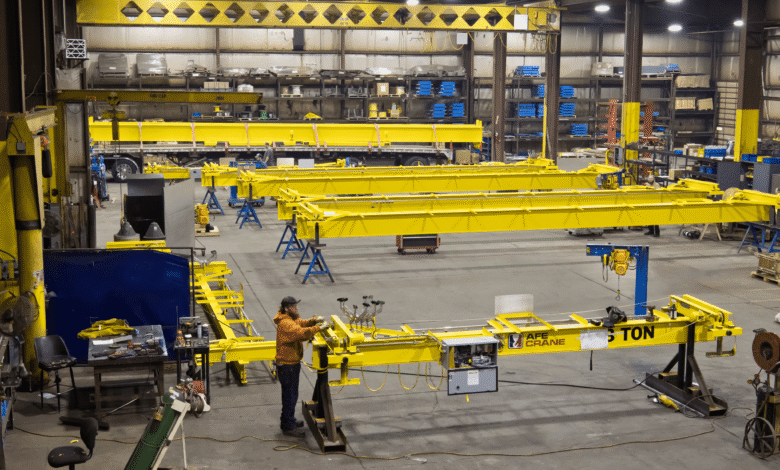Innovations in Overhead Crane Technology: Efficiency and Cost Insights

Technological Advancements in Bridge Cranes
Bridge cranes have achieved significant performance improvements by integrating core technologies of Industry 4.0:
- Automation and IoT: Cranes equipped with sensors and IoT functionality enable real-time monitoring and remote operation, reducing human intervention and error rates.
- Data Analysis: By collecting and analysing operational data, intelligent cranes can optimise performance, predict maintenance needs, and minimise downtime.
- Modular Design: Flexible single-beam and double-beam configurations allow businesses to customise systems according to specific requirements, balancing performance and budget.
These innovations make bridge cranes a key tool for enhancing efficiency and controlling costs. A detailed analysis of bridge crane pricing can help businesses make more informed procurement decisions.
Advantages of Free-standing Bridge Cranes
Among various crane designs, free standing bridge cranes are highly favoured for their flexibility. Unlike top-mounted cranes that rely on building structures, independent cranes are supported by their own steel structures, making them suitable for locations with high ceilings, obstacles, or limited building structures. According to industry experts, these cranes only need to be installed on a standard 6-inch reinforced concrete floor to provide exceptional stability and flexibility. Free standing bridge cranes feature a modular design, enabling businesses to easily scale operations as needed. This design is particularly practical in manufacturing and warehousing industries, where growing demands can be met without significant infrastructure modifications.
Cost considerations for bridge cranes
Investing in a bridge crane requires balancing initial costs with long-term value. Factors influencing overhead crane prices include:
- Lifting capacity: Cranes with lifting capacities ranging from 5 tonnes to 120 tonnes are more expensive due to higher material and component requirements. Single-girder cranes (up to 20 tonnes) are typically more economical than double-girder cranes (up to 500 tonnes).
- Span and height: Larger spans and lifting heights require more steel and engineering design, increasing costs.
- Automation features: Smart features like remote control and collision avoidance systems increase prices but significantly enhance safety and efficiency.
- Installation and environment: Freestanding cranes can reduce installation costs in locations without structural support.
By understanding these factors, businesses can more effectively plan budgets and select the appropriate crane model.
Connect with News Dipper’s technical insights
News Dipper is dedicated to reporting on cutting-edge trends in technology and business innovation. For more content on how technologies like smart cranes are driving industrial development, visit our technology column. From high-frequency trading to digital asset management, News Dipper provides you with the latest tools and insights driving modern business.
Conclusion
Bridge cranes are reshaping industrial operations by integrating automation, efficiency, and flexibility. Innovative designs like freestanding bridge cranes offer unique advantages for space-constrained facilities, while bridge crane price guides provide businesses with clear cost planning. As Industry 4.0 continues to evolve, leading manufacturers are driving industry transformation through customised solutions. Stay tuned to News Dipper’s expert coverage to explore how smart cranes can help your business soar.



